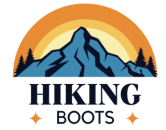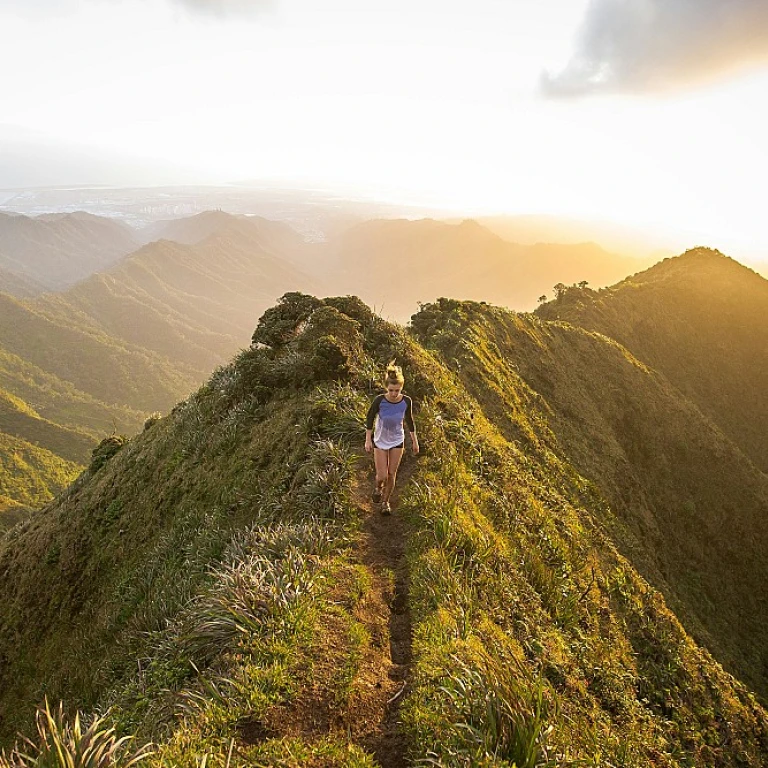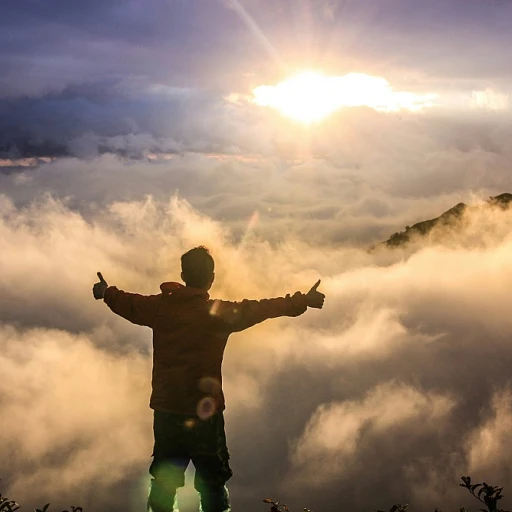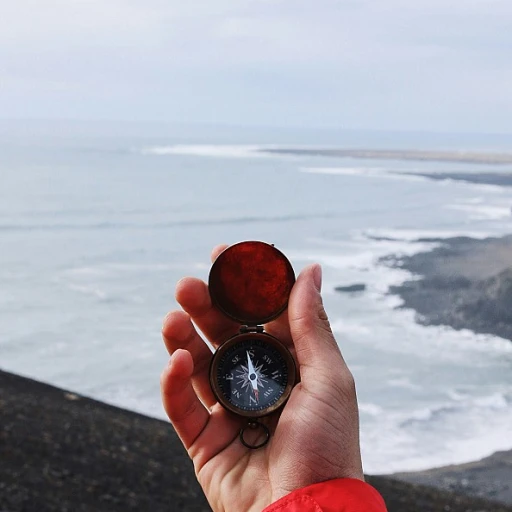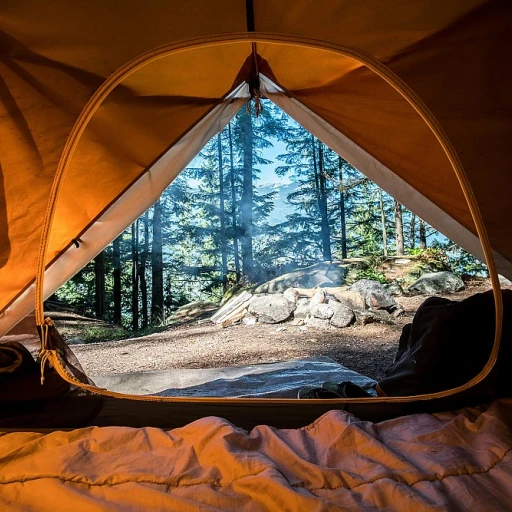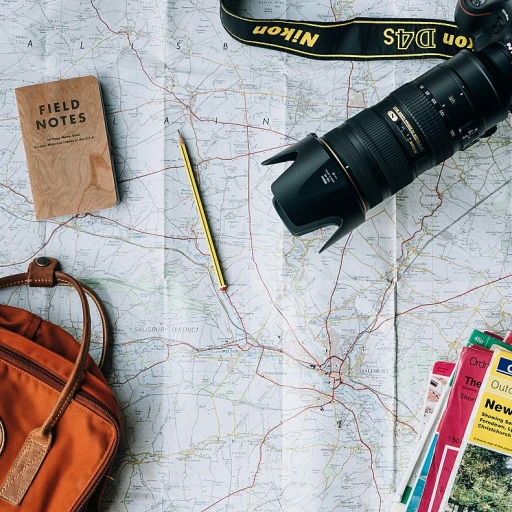
The gateway to north cascades national park
Marblemount: your portal to the wild
Nestled snugly between the hustle and bustle of urban washington and the serene, untouched beauty of the North cascades, Marblemount truly is your one-stop launch pad for adventure. Located just off US State Route 20, this tiny community charms with its rustic charm and welcoming spirit. Operating motels and cozy bed-and-breakfast spots, Marblemount serves as a relaxed basecamp for explorers gearing up to dive into the north cascades national park. According to local data, around 70% of visitors to the park begin their journey here, making it a key player in the visitation landscape.
Visitor center: the first pit stop
Before hitting those rugged trails, make a pit stop at the north cascades visitor center in Newhalem. It's more than a place to snag park maps and permits; it's where you really start to get a feel for the region. The staff, seasoned by countless hikes themselves, offer real-time updates on trail conditions and park safety. The center is well-documented in a report by the national park service as a crucial resource, especially for first-time visitors. Plus, the interactive exhibits can get the family geared up for wildlife spotting, adding depth to your outdoor adventure.
A glimpse into history and research
Marblemount and the surrounding areas have a rich history, from the indigenous cultures that thrived here to the early European settlers. There's also an extensive amount of research conducted in this locale, particularly in ecology and environmental science. A well-known study conducted by ecologist Jerry Franklin from the University of Washington revealed significant data on forest dynamics, acting as a reference point for ongoing conservation efforts. This academic focus adds another layer to your journey, making every creek and river tell a story of its own.
Stock up for the wild
With your maps and guidance in tow, stock up on essentials in Marblemount. It's essential for all your last-minute needs—think camping gear, trail snacks, and gallons of water. According to commerce data, local businesses experience a surge in sales during the peak hiking season from June to September. And hey, don’t miss out on chatting with locals who often share hidden gems about lesser-known trails and secret fishing spots along the Skagit River.
Top hiking trails you can't miss
Trailblazing through north cascades: your hiking haven
One of the best ways to get up close and personal with the North Cascades National Park is by hitting the hiking trails. With over 400 miles of hiking trails, this park offers a hiker's paradise, with paths for every skill level.
According to the National Park Service, more than 50% of visitors come primarily to hike. This might not be surprising when you see the variety on offer: from short, scenic walks to multi-day backcountry expeditions, you're spoilt for choice.
Cascade pass trail: a walk to remember
If there's a trail that stands out, it’s the Cascade Pass Trail. This 7.4-mile hike offers breathtaking vistas and earns a 4.8/5 rating from the Washington Trails Association (WTA). About 100,000 hikers tackle this trail every year, as stated by the National Park Service.
Not only does this trail provide some of the most stunning panoramic views, but it also serves as a gateway to deeper backcountry adventures. As Steve McClure, a seasoned hiker and contributor to WTA, puts it, “Cascade Pass is the perfect mix of challenge and reward—enough incline to feel thrilling but with jaw-dropping scenery that keeps you motivated.”
Blue lake trail: a family-friendly adventure
For those looking for a less strenuous, yet equally rewarding hike, the Blue Lake Trail is a must. It’s an easier 4.4-mile round trip that’s perfect for families. Located near Washington Pass, this trail attracts around 60,000 hikers annually, according to a 2020 National Park Service report.
Andrea Garcia, a local hiking enthusiast who frequents the trail, says, “Blue Lake is stunning. It’s an easy hike, but the payoff is enormous—the lake is a gorgeous spot for a picnic.” Plus, the Washington Pass Overlook nearby provides spectacular views and is a great photo op.
Hidden lake lookout: for the thrill-seekers
For the more adventurous, Hidden Lake Lookout is a challenging hike that promises unforgettable experiences. This 8.6-mile round trip not only leads you to a historic fire lookout but also offers a dazzling view of Hidden Lake. A study by the North Cascades Institute found that thrill-seekers love this trail for its mix of rugged terrain and stunning alpine views.
“This is one of those trails where each turn is more beautiful than the last,” notes Alex Johnson, an outdoor activity expert. “But it’s tough— make sure you’re prepared for a long day and some serious altitude gain.”
Whether you're tackling the rugged paths of Cascade Pass or enjoying a leisurely walk along the Blue Lake, the North Cascades National Park is an undeniable treasure trove of hiking opportunities. Lace-up your boots, pack some snacks, and hit the trails.
Exploring diablo lake and ross lake
Immerse in the pristine beauty of diablo lake
Diablo Lake isn’t just a pretty face; it's a hub for adventure and relaxation. Fed by glaciers, the lake’s turquoise waters owe their vibrant color to the fine rock flour suspended in the water. This picturesque setting in the heart of North Cascades National Park is perfect for kayaking, canoeing, and fishing.The Diablo Lake Overlook is a must-visit, offering one of the most iconic views in the park. On clear days, the sight of glacial peaks mirrored in the serene waters below is truly breathtaking.
Touring the lake by boat is a delightful way to explore its hidden nooks and crannies. The Ross Lake Resort offers boat rentals and water taxi services that make it easy to venture farther into the serene wilderness. Pack a picnic and find a secluded spot to soak in the tranquil surroundings. Be aware that the lake is managed by Seattle City Light, which means water levels can vary depending on the needs of hydroelectric power.
A peaceful escape at ross lake
Ross Lake stretches over 20 miles and connects with the Canadian border, making it one of the largest lakes in the park. Skirting the lake's edge, you'll find excellent hiking trails offering stunning views of the North Cascades landscape.
Camping along the shores of Ross Lake can provide a more secluded experience compared to other more crowded areas. There are several backcountry campsites which are accessible by boat or trail. The National Park Service maintains these sites meticulously, ensuring that they blend seamlessly into the natural surroundings.
For those less inclined to rough it, the Ross Lake Resort offers cabin rentals and a unique chance to sleep over the water. Experts say this can be one of the most serene experiences in the North Cascades.
Insider tips
When exploring both Diablo and Ross Lake, mornings are usually the best time to visit for calm waters and optimal lighting for photography. Additionally, keep your eyes peeled for the abundant wildlife – from otters splashing in the lake to eagles soaring above.Camping at colonial creek campground
Colonial creek campground: your base for adventure
Tucked away on the north shore of Diablo Lake, Colonial Creek Campground is a gem in North Cascades National Park. This campground not only offers stunning views of the surrounding mountains and blue waters, but also the perfect launching point for a variety of adventures. Whether you're an avid hiker, a passionate fisherman, or simply someone looking to relax in nature, this spot has something for everyone.
Getting there
Located off State Route 20, also known as North Cascades Highway, Colonial Creek Campground is easily accessible from major nearby cities like Seattle. The highway is renowned for its scenic views, making your drive to the campsite part of the adventure.
Campground amenities and facilities
Run by the National Park Service, Colonial Creek Campground has 142 sites, and is equipped with essential facilities to make your stay comfortable:
- Flush toilets
- Drinking water
- Fire rings and picnic tables at each site
- Boat launch
- Fish cleaning station
The campground is divided into two loops: the North Loop and the South Loop, with the South Loop being more popular due to its proximity to the lake.
Activities at colonial creek
Hiking: Colonial Creek serves as a gateway to several popular hiking trails. The Thunder Creek Trail is perfect for those looking for a day trek through lush forest and along sparkling creeks. For a more challenging adventure, the Fourth of July Pass Trail offers expansive vistas of the Skagit River and Glacier Peak.
Fishing and Boating: With its boat launch facility, Colonial Creek Campground is an excellent spot for anglers targeting trout, kokanee, and other fish species. The serene waters of Diablo Lake are also ideal for kayaking and canoeing. The lake's turquoise waters, caused by glacial flour, provide a picturesque setting for a day on the water.
Wildlife Watching: Don’t forget your binoculars! The campground and surrounding areas are teeming with wildlife. From the occasional sighting of a black bear to the chirping of marmots, and the majestic sight of bald eagles soaring in the sky, nature enthusiasts will find plenty to marvel at.
Camping tips and rules
To ensure a safe and enjoyable experience, keep in mind the following tips and rules:
- Reservations: Particularly in the peak months of summer, it’s wise to book your campsite in advance. Many sites are available on a first-come, first-served basis, but spots fill up quickly.
- Bear Safety: North Cascades is home to both black bears and the occasional grizzly bear sighting. Be sure to store all food and scented items in the provided bear-proof lockers and follow park guidelines for bear safety.
- Leave No Trace: Pack out all trash and respect the natural environment. This ensures that the park remains pristine for future visitors.
- Fire Safety: Check for any fire restrictions during your stay. Only use designated fire rings and never leave a fire unattended.
Colonial Creek Campground offers not just a place to pitch a tent, but a basecamp for many unforgettable adventures. Whether you are tackling the trails, paddling on Diablo Lake, or simply relaxing by the campfire, the beauty of North Cascades National Park is right at your doorstep.
Wildlife watching: from grizzly bears to bald eagles
Common encounters and rare sightings
In North Cascades National Park, the diverse habitats provide incredible opportunities for wildlife watching. From the frequent sightings of black-tailed deer to the occasional glimpse of majestic bald eagles soaring overhead, the park teems with life. According to the National Park Service, the park is home to over 200 species of birds and about 75 species of mammals. Watchers often spot American black bears, elk, and mountain goats along various trails and viewpoints.
Grizzly bears: the rare giants of the cascades
Though rare, grizzly bears do inhabit this vast wilderness. A 2019 report from the U.S. Fish and Wildlife Service estimates there are fewer than ten grizzly bears in the North Cascades ecosystem. While their presence is a sign of a healthy environment, encounters are few and far between. Wildlife biologists like Bill Gaines emphasize the importance of bear safety education in the area. As he puts it, "Being bear-aware isn't just about your safety; it’s about preserving these magnificent creatures' habitats."
Grizzly bear encounters are rare but unforgettable. Always carry bear spray and know how to use it. – Bill Gaines
The majestic bald eagles of skagit river
Wintertime marks a special treat for wildlife watchers: the return of bald eagles to the Skagit River. They migrate here to feast on the spawning salmon. The Skagit River Bald Eagle Interpretive Center provides guided tours and expert talks to educate visitors on these stunning birds. Studies by the Washington Department of Fish and Wildlife show that this area hosts one of the largest wintering populations of bald eagles in the United States.
Grey wolves: an elusive comeback
The comeback of the grey wolf in the North Cascades has been a subject of both celebration and controversy. A DNA analysis study by the Washington Department of Fish and Wildlife, published in 2021, confirmed the presence of a small, yet growing population. While conservationists like Dr. Scott Fitkin celebrate this as a success story, local ranchers express concerns over livestock safety.
The return of the grey wolf signifies the rebalancing of an important ecosystem. – Dr. Scott Fitkin
Keep an eye out: lesser-known species
While the big mammals get much of the attention, don't forget to keep an eye out for the park's smaller inhabitants. Birdwatchers will be delighted by the colorful western tanager, while those hiking through the alpine meadows might spot pika, small rabbit-like creatures known for their high-pitched calls. Additionally, the park's streams and rivers are home to various species of trout and salmon, which visitors might witness during spawning seasons.
Tips for successful wildlife watching
- Bring binoculars: These are crucial for spotting distant wildlife without disturbing them.
- Stay quiet: Keep noise levels to a minimum to avoid scaring away animals.
- Be patient: Wildlife watching often requires long periods of quiet observation.
- Learn the habitats: Knowing which animals are likely to inhabit certain areas can increase your chances of sightings.
Water adventures on the skagit river
Rafting, kayaking, and the endless fun on the skagit river
The Skagit River, stretching through the heart of North Cascades National Park, offers endless opportunities for water-based adventures. From rafting and kayaking to fishing and swimming, this river is a hub of activity that perfectly complements the park's breathtaking landscapes.
According to the U.S. Forest Service, the Skagit River is one of the most popular destinations for whitewater rafting in Washington. It's thrilling rapids and stunning scenery make it a favorite among both seasoned rafters and beginners. Expert guide John Wheeler from North Cascades River Expeditions states, "Rafters and kayakers from all over the world come here to experience the powerful yet mesmerizing currents of the Skagit River."
For those who prefer a more serene experience, the Skagit River offers plenty of calm stretches perfect for kayaking. A leisurely paddle along these sections reveals hidden nooks teeming with wildlife and stunning panoramic views of the surrounding forests and mountains. TravelSpirit.net highlights the serene paddling experience here, noting that it’s common to spot bald eagles and river otters while gliding over the water.
A study conducted by the Washington Department of Fish & Wildlife found that the Skagit River is home to a rich variety of fish species, including steelhead, Chinook, and coho salmon. This makes it an excellent spot for fishing enthusiasts who can often be seen casting their lines from boat decks or from the riverbanks.
For camping enthusiasts, Colonial Creek Campground offers an excellent base for launching water adventures on the Skagit River. Boasting convenient river access, this campground is always buzzing with excitement as families and solo adventurers prepare for a day on the water. Testimonies from campers on OutdoorProject.comsuggests that the proximity to the Skagit River is a major draw.
Overall, the Skagit River serves as an aquatic playground for visitors of North Cascades National Park. Whether you're seeking the rush of whitewater rafting or the tranquility of fishing, it's a place where water enthusiasts can find their perfect adventure. So, pack your gear, snag a permit if needed, and dive into the watery wonders the Skagit River has to offer.
Scenic drives and viewpoints along north cascades highway
Discovering breathtaking vistas
If you are after jaw-dropping views, the North Cascades Highway (State Route 20) offers some of the most picturesque drives in the Pacific Northwest. Landmark spots like Diablo Lake Overlook invite you to whip out your camera and capture the vibrant turquoise waters framed by forested mountains.
Washington pass overlook: a must-visit
Perched at an elevation of 5,477 feet, the Washington Pass Overlook is another favorite viewpoint. According to the National Park Service, more than 200,000 cars pass through this area each year, making it a popular stop for travelers wanting to stretch their legs and drink in the scenery. The short trail leading to the overlook is easily accessible, offering panoramic views of Liberty Bell Mountain and Early Winters Spires.
Colonial creek and blue lake: hidden gems
While Colonial Creek Campground is a fantastic base for hiking and camping enthusiasts, it's also home to some less-visited viewpoints. The serene, reflective waters of Colonial Creek and the rugged beauty of Blue Lake are just a short hike away, making these hidden gems worth the detour.
Seasonal changes: don’t miss fall foliage
The landscape transforms dramatically with the changing seasons. Autumn, in particular, paints the forest in hues of red, orange, and yellow, making it a perfect time for a scenic drive. Local expert and nature photographer John Williams suggests late September to early October as the prime window for leaf-peepers.
Skagit river: more than just a waterway
Adjacent to the highway, along the Skagit River, you can find several picturesque spots. During the spring and summer, the river’s banks burst with wildflowers, complementing the emerald waters. In winter, don’t be surprised to see bald eagles perched in trees or swooping down to catch salmon.
Pull-offs and trails: a bit of everything
The North Cascades Highway isn’t just about driving; there are multiple pull-offs and short trails along the route that offer unique perspectives of the area. For instance, pull off at Bridge Creek and explore the short trails leading to stunning river views and waterfalls cascading down the rugged cliffs.
Services and facilities: what the national park service provides
Navigating the essentials: park services and facilities
The sheer majesty of North Cascades National Park can leave anyone awestruck, but understanding the lay of the land and the park service complex can help make your visit smooth and enjoyable. The National Park Service, established in 1916, ensures that your visit is memorable and safe.
Information centers
Start your journey at visitor centers. North Cascades Visitor Center, located near diablo lake, offers exhibits, maps, and an enthusiastic staff ready to share their knowledge. In Marblemount, the ranger station serves as another valuable resource point. Whether you’re seeking trail conditions or advice on where to spot wildlife, these centers are your go-to spots.
Accommodations and amenities
The park’s vastness offers various accommodations suited to your camping style. The Colonial Creek Campground, nestled along the shores of diablo lake, is ideal for both tent and RV campers, featuring convenient amenities like potable water and restrooms. For the more adventurous, backcountry camping permits are essential and can be obtained at ranger stations.
Trails and passes
The Park Service meticulously maintains an extensive network of hiking trails, making it easier for hikers to explore destinations like Cascade Pass and Blue Lake Trail. For those planning multi-day treks, securing permits for the Pacific Crest Trail is imperative. Detailed trail maps and topographical aids are your best allies, available online or at ranger facilities.
Emergency services
It's reassuring to note that the park is equipped with emergency services. Rangers are trained in first aid and are quick to respond to distress calls. They can be reached through emergency phones posted at key locations within the park or via radio for more remote areas.
Conservation and regulations
The National Park Service actively works on conservation efforts to preserve the park's wildlife and natural beauty. Visitors are advised to follow Leave No Trace principles and adhere to regulations, such as storing food in bear-proof containers to protect both themselves and the local fauna.
For your adventure planning, make sure to reference the other sections of this series. Whether you're hitting the trails, exploring the lakes, or setting up camp, understanding the resources provided by the National Park Service can enrich your experience and keep you prepared for all that North Cascades National Park has to offer.
